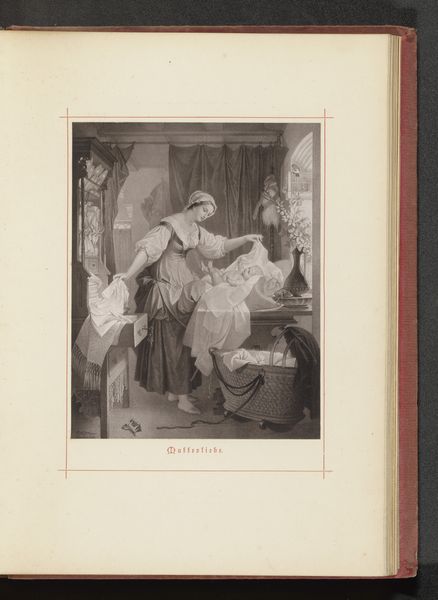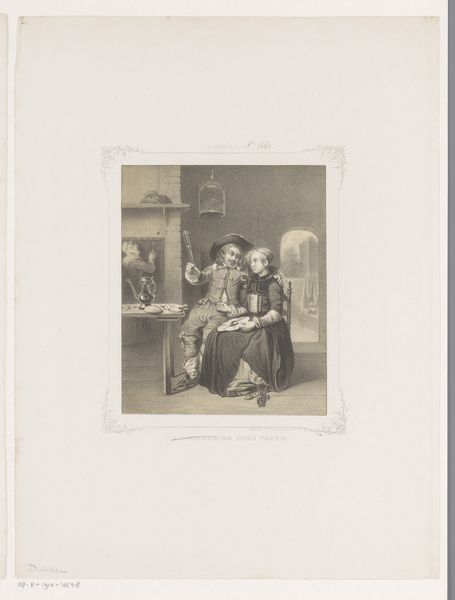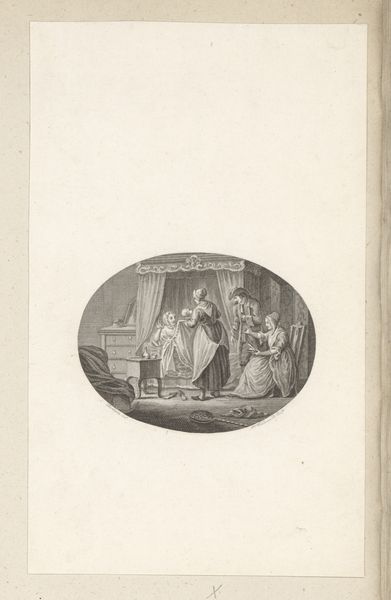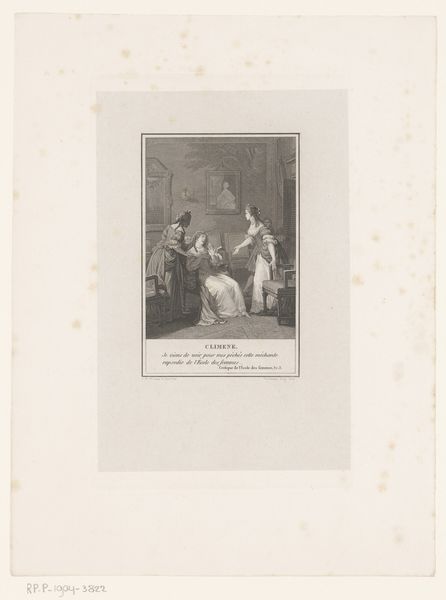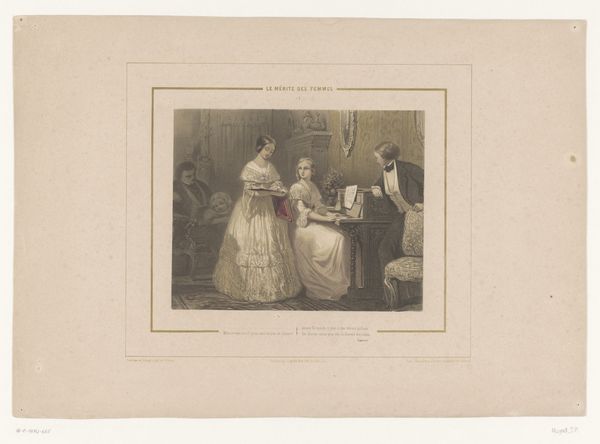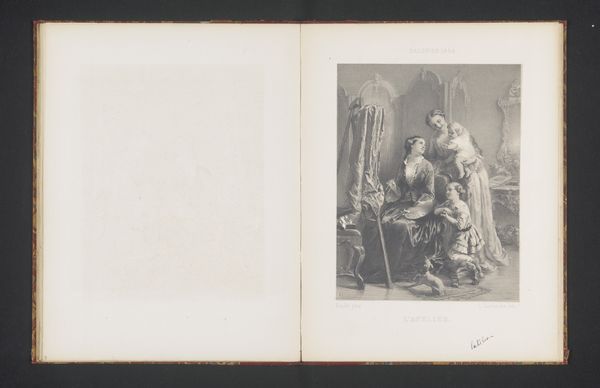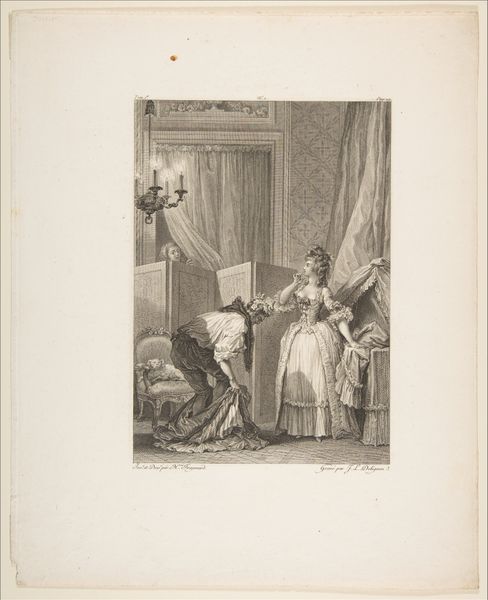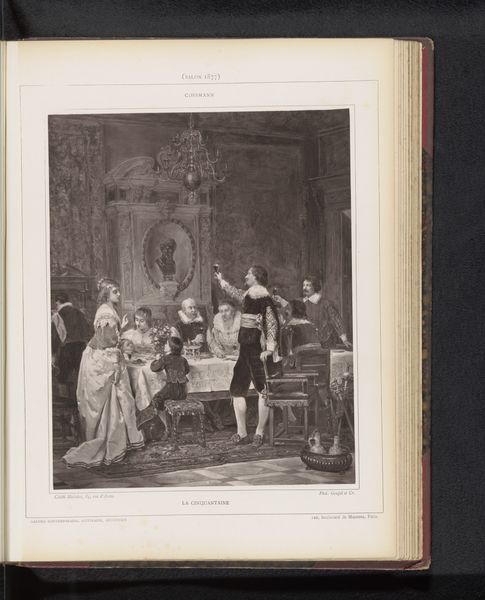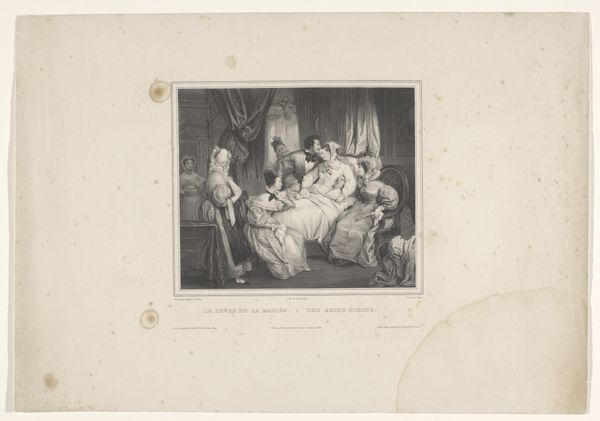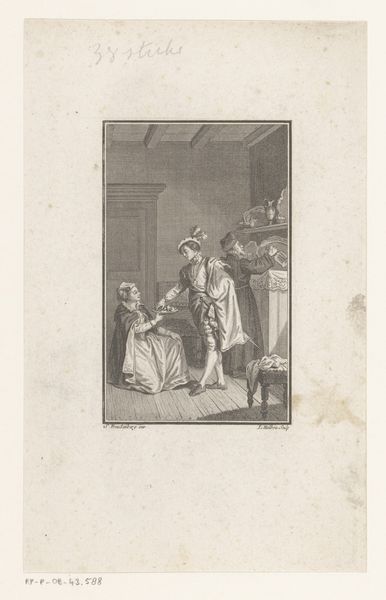
Fotoreproductie van een tekening van de thuiskomst van een jongen met een wandelstok c. 1871 - 1881
0:00
0:00
Dimensions: height 174 mm, width 136 mm
Copyright: Rijks Museum: Open Domain
Editor: We’re looking at a photo reproduction of a drawing titled "Fotoreproductie van een tekening van de thuiskomst van een jongen met een wandelstok", dating from around 1871 to 1881. The image evokes a sense of domesticity disrupted, perhaps by the return of a son or other family member. How do you interpret the social dynamics represented in this scene? Curator: This work presents itself as a genre painting, fitting into the Romantic era's fascination with idealized depictions of everyday life. The 'return' narrative is potent – but return to what, exactly? Think about the historical context. The late 19th century saw significant social and economic changes. What could the arrival of this young man, with his walking stick and relatively ornate dress, signify to contemporary viewers? Is he a returning soldier, a student, or something else? Editor: That’s a great point; it’s easy to see just the immediate scene, but the man’s dress and the slightly apprehensive body language of the woman standing hints at more complex possibilities. Do you see any potential social critique embedded within what initially appears to be a sentimental homecoming? Curator: Precisely. While seemingly sentimental, genre paintings often acted as vehicles for exploring anxieties surrounding social mobility and changing class structures. Notice the staged theatricality of the scene – everyone is posed, as though for a portrait. The family, the dog... even the details of the interior space, communicate a particular ideal, and maybe, reveal what that ideal is obscuring. Is it perhaps wealth gained through commerce attempting to mirror aristocratic lineage? Or perhaps a celebration of simple middle class family values after years of social upheaval? What is the function of presenting an idealized family reunion? Editor: I never considered how much social information could be packed into one image! I initially thought of it as just a nice domestic scene. Curator: It reflects how images participate in and shape larger narratives. It makes one ponder about art's role, how it serves, perhaps unwittingly, as a record of cultural anxieties. Editor: That gives me a whole new way to look at genre paintings. Thanks!
Comments
No comments
Be the first to comment and join the conversation on the ultimate creative platform.
